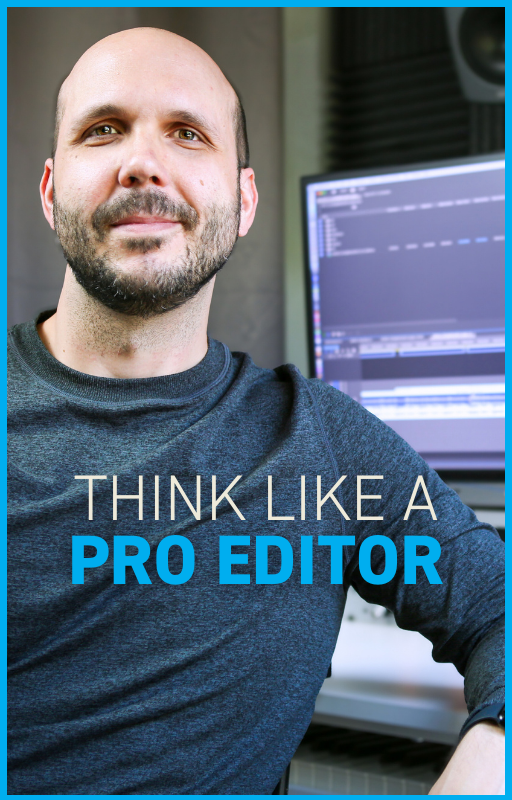Editors: Your Rough Cuts Suck
Mar 16, 2024The dreaded rough cut: a blank page, an empty canvas, and what used to be the bane of my editing existence until I finally figured this out:
Your rough cuts suck. And so do mine. And that’s OK.
In this article I’d like to provide a little perspective that will make your rough cut process a lot less painful.
Ever since I started editing seriously in high school, my least favorite part of the process was starting with a blank timeline. There is an anxiety about starting from nothing. The creative process requires a starting point and it used to really stress me out.
I would toil away over the first rough cut. Deep down, I wanted it to be perfect. Whoever my audience was at the time—a teacher, a classmate, a friend—I wanted to impress them. I’d get the same feeling early on in my career as I wanted to make a good impression on a director, producer, or client.
Though time after time, no matter how hard I tried, there was always feedback. It wasn’t until I I embraced the fact that there would always be feedback, and that it was actually a beautiful part of the process, that I started to enjoy creating the first cut.
The truth is, when you’re embarking on a creative endeavor, feedback is essential. When you’re grinding away at your edit bay you are losing perspective by the minute. It’s only when you share your work with a fresh set of eyes that you can see how something can be improved.
My focus on perfection led to two major issues. First, because I was treating the rough cut as a final creation, I would incorporate all of my own creative ideas into the piece. Was there a line from an actor that I didn’t think was landing? I’d cut it out. A scene felt too long? I’d make it shorter. Was there an alternate angle I liked better? I’d use it. Don’t get me wrong, adding your creative ideas is essential, but it’s all about timing and expectations. If your client is expecting to see one thing, and you present another, they will often ask you to go back and put in what you took out, which is not a great way to kick off a creative collaboration.
So my first piece of advice for your rough cuts is to present them as-written. As for your creative ideas, I recommend writing them down or even having an extra timeline with some rough assemblies to save for later. Once I get the first round of feedback I like to create some alternate versions to share my ideas. Since I started working this way, I’ve had much more success because I’m including the client in the creative process step by step, and I’m giving them options to choose from.
The second main problem with trying to perfect a rough cut before sharing it is that I would get too attached to it. Because I spent so many hours agonizing over it, the fact that there was any feedback at all was offensive. Does this sound familiar? I know I’m not the only one because as someone who also hires other creatives, I actually see this a lot. You can tell when you’re working with someone who is too attached to their rough cut because making any changes between the first and second cuts is like pulling teeth.
So my second piece of advice is to treat the rough cut as rough. Obviously, you want to put your best foot forward, but don’t toil away on it unnecessarily. Expect feedback. It’s a first draft. In fact, I would say one of the main things that separates amateurs from pros is how much a cut improves between the first and second cut. Or the second and third cut. So make that your goal. Get the rough cut out quickly and be ready to make substantial changes based on client feedback.
In conclusion, embrace the fact that rough cuts suck. Present the first rough cut as scripted and don’t overthink it. Save your energy to jump into the creative sandbox with your collaborators to make the product better together. I’ve enjoyed the rough cut process so much more since I’ve adopted this mindset.

Austen is an ADDY award-winning film & commercial editor with over 20 years of experience. He has worked with global brands like Meta, KPMG, SAP, and Christianity Today. His PSA work has championed causes like school safety (with Matthew McConaughey), driving safety, and anti-tobacco. A thought leader in the editing field, his online lessons quickly amassed over 100K views after launch.

